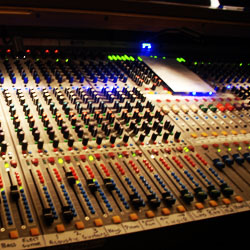The low hum you hear is not a distant cargo plane.
It’s not your local television helicopter.
It’s the beginning of the end… it’s feedback.
Sooner or later every sound system operator experiences feedback.
Most people think of feedback as that dreaded deafening high-pitched squeal resulting from a bad combination of mic gain, mic location and speaker volume, but feedback often begins as a low pitched hum.
If you recognize it early and correct it quickly, most people won’t notice. Your reputation as a sound system operator will go untarnished and your sound-savvy colleagues will congratulate you on a good save.
Let that hum turn into a squeal too many times and your name may stop showing up on the schedule for the sound system ministry. This article will get you well on your way to banishing feedback.
There are other causes for a low pitched hum in a sound system, but you should learn to recognize the tell-tale hum of a sound system on the verge of feedback.
What is Feedback?
Feedback is the result of cycled sound. In short, a microphone amplifies sound coming from a speaker which is then amplified by the sound system and passed out the speaker back into the microphone.
This cycling occurs at an exponential rate. Feedback commonly occurs when stage monitor speaker volumes are set too high and/or the person using the microphone is standing too close to the monitor.
How Can I Prevent Feedback?
I. Set up the Sound System For the Room (Tuning a Room)
In any given room some frequencies will be more prone to feedback. Hire a qualified, experienced, well-respected sound technician to “tune the room.”
Using a spectrum analyzer, they can play audio through your sound system and see what frequencies are out-of-line. Using this information, they will set your house-level equalization unit to correct those frequencies. The result is a better sound and less feedback.
II. Proper Stage Setup
When you arrive an hour before the service (hint-hint) to set up the system, the stage, and test all media, pay particular attention to how you set up the stage. Place microphones out of range of speakers and pointing away from speakers.
Then, talk with the staff/service leaders/worship singers/etc about proper microphone placement. Lapel microphones should be one hand width from the person’s chin when they put their chin to their chest.
Handheld microphones should be between 3 and 6 inches from the user’s mouth. Tell the handheld users that you control the volume and they don’t need to worry about moving the mic back and forth to do so.
The closer the microphone to the source of the sound, the less volume you have to send out and the less likely to get feedback.





















